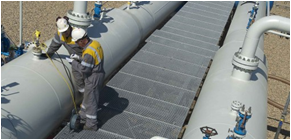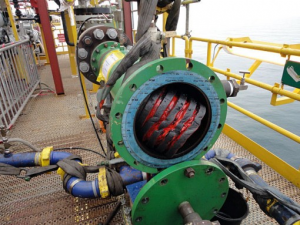
COMMISSIONING
A SAFE AND EFFICIENT START-UP SOLUTION
We offer a number of general pipeline commissioning services depending on the product-type and location of the pipeline. After passing a number of inspection tests, it is ready for use and can be filled with product. Our partner has developed the skill and expertise to ensure hitch commissioning adapted to the demands of the pipeline owner.
For commissioning of transportation pipelines containing hydrocarbons, gas or liquid, we have developed an advanced vacuum method which is both efficient and cost-effective, with extreme reductions in the use of inertization gases as well as an extreme reduction in product losses due to flaring of mixtures. As a result, environmental impact is minimal.
Prior to commissioning, we offer the following inspections among others:
- Welding records review
- Material records review
- Coating records review
- Location inspection
- Strength test
- Tightness test
- Stress test
- Baseline surveys
- Moisture level inspection
- Out of roundness inspection Cathodic protection. Vacuum commissioning
The advantages of filling under vacuum compared to filling with pigs, include: - No need for pig traps and pigs
- No blending of product in the nitrogen buffer,
- No nitrogen/product mixtures to be vented off

DECOMMISSIONING
A RESPONSIBLE END-OF-LIFE SOLUTION
At the end-of-life stage, pipelines and systems must be appropriately prepared for reuse or abandonment and in compliance with environmental regulations, all hydrocarbons must be removed. The Globestratix team is equipped with a cleaning program that cleans your pipeline to your required specification.
Our decommissioning solutions are cost-effective, environmentally sound, and saves your pipeline for possible re-use.
Pipeline and system decommissioning includes the activities required to take the pipeline out of operation and they include:
- Making the pipeline product-free
- Chemical cleaning
- Mechanical cleaning
- Inertization by filling with safe product
First the pipeline needs to be purged and emptied using pigs driven by a suitable fluid or gas. When the line is empty and free of product, we can continue to remove all residue until the required cleanliness is achieved.
When the line is finally free of hydrocarbons, it can be conserved for future use, or commissioned straight away for its new life.
If the pipeline is to be taken out of service, it will usually be left in place and filled with water, concrete, foamed concrete or similar products.



